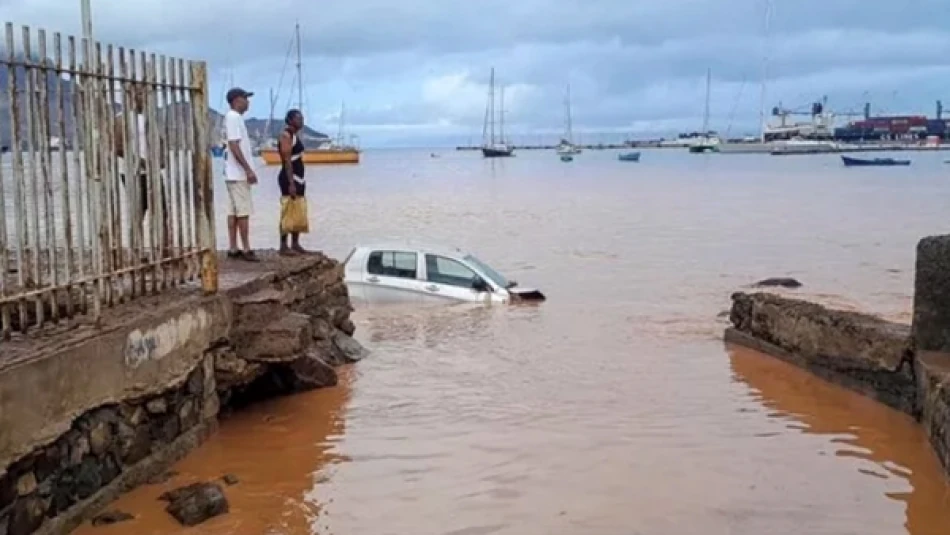
Deadly Floods Ravage Cape Verde, Death Toll Rises
Cape Verde's São Vicente Island Devastated by Flash Floods That Killed Nine in Five Hours
A catastrophic flash flood struck Cape Verde's São Vicente Island on Monday, killing at least nine people and displacing 1,500 residents after the island received nearly twice its annual rainfall in just five hours. The disaster highlights the growing vulnerability of small island nations to extreme weather events intensified by climate change.
Unprecedented Rainfall Overwhelms Infrastructure
São Vicente Island typically receives 116 millimeters of rainfall throughout an entire year, according to Cape Verde's meteorological institute. However, on Monday morning alone, 193 millimeters of rain fell within a five-hour window—equivalent to 166% of the island's annual precipitation.
The torrential downpour transformed streets into raging rivers, sweeping away vehicles and people. Municipal council member José Carlos da Luz confirmed seven deaths to state radio, while three others remained missing. The International Federation of Red Cross and Red Crescent Societies later updated the death toll to nine.
Critical Infrastructure Paralyzed
The floods brought the island's transportation network to a standstill. Interior Minister Paulo Rocha reported that floodwaters completely disrupted traffic throughout São Vicente and severed the main road connecting to Cesária Évora International Airport—the island's primary gateway for tourism and commerce.
Rock slides compounded the transportation crisis, blocking additional routes and hampering emergency response efforts. The airport closure likely stranded tourists and disrupted the flow of essential goods to the island's 85,000 residents.
Climate Vulnerability Exposed
This disaster underscores the acute climate risks facing small island developing states like Cape Verde. The West African archipelago, located 600 kilometers off Senegal's coast, sits in a region increasingly prone to extreme weather patterns linked to shifting Atlantic Ocean currents and rising global temperatures.
The rainfall intensity—nearly 40 millimeters per hour—far exceeded the island's drainage capacity, revealing critical infrastructure gaps that many small island nations struggle to address due to limited resources and technical expertise.
Economic and Tourism Implications
Cape Verde's economy heavily depends on tourism, which accounts for approximately 25% of its GDP. São Vicente, home to the cultural hub of Mindelo, attracts thousands of visitors annually for its music scene and colonial architecture. Extended airport closures and damaged infrastructure could significantly impact the island's tourism revenue during peak season.
The displacement of 1,500 people—nearly 2% of the island's population—also strains local resources and may require international humanitarian assistance. Cape Verde's government will likely face substantial reconstruction costs that could pressure its fiscal position.
Regional Climate Pattern
This flooding event follows a pattern of intensifying weather extremes across West Africa's Atlantic islands. Similar flash flood events have struck other vulnerable island communities in recent years, from the Caribbean to the Pacific, demonstrating how climate change disproportionately affects small island states despite their minimal contribution to global emissions.
The concentration of São Vicente's infrastructure and population in low-lying coastal areas—common among island communities—amplified the flood's destructive impact, suggesting that future urban planning must account for increasingly unpredictable weather patterns.
Most Viewed News

 Layla Al Mansoori
Layla Al Mansoori






